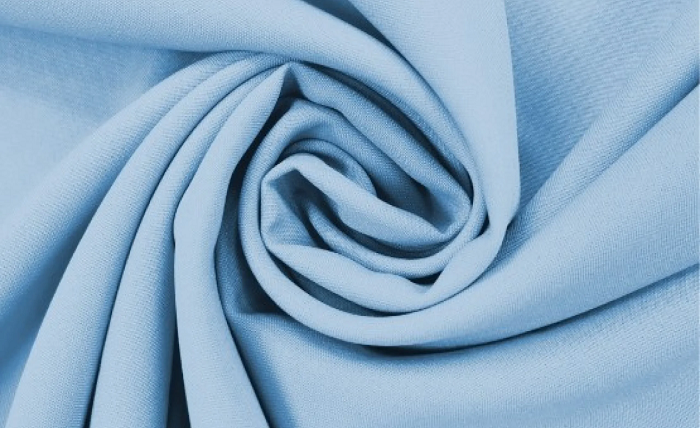Uniforms are changing—and for the better. Today’s designs are becoming more comfortable, functional, and environmentally friendly. Brands are now looking beyond appearance, focusing on how uniforms perform and how they’re made. From fabric selection to essential features and manufacturing choices, every step counts in creating modern, purpose-driven uniforms.
The Future of Uniforms: Functionality Meets Sustainability
Must-Have Features for Uniforms
When it comes to uniforms, functionality is key. One of the top features brands prioritize is moisture-wicking ability. This helps pull sweat away from the body, keeping the wearer dry and cool—even during long or active shifts. Combined with breathable fabrics, this feature improves comfort and prevents skin irritation.
Equally important is stretch and flexibility. Adding elastane or using fabrics with natural stretch allows for easier movement—crucial for jobs that involve lifting, walking, or staying active throughout the day. Today, many activewear manufacturers are helping shape the way uniforms are designed, bringing in expertise from sportswear to make uniforms more movement-friendly and performance-driven.
Another key aspect is durability. Uniforms are worn and washed regularly, so they must hold their shape, resist fading, and stay strong over time. Using durable fabrics, reinforced seams, and anti-pilling finishes helps extend garment life, which also means fewer replacements and better value for businesses.
Sustainability is now a top priority as well. More companies are designing uniforms with long-term use in mind—using eco-conscious fabrics, reducing production waste, and choosing features that keep garments looking new for longer.
 Durability matters just as much. Uniforms go through frequent washing, friction, and wear, so they must retain their shape, color, and quality over time
Durability matters just as much. Uniforms go through frequent washing, friction, and wear, so they must retain their shape, color, and quality over time
What Materials Are Commonly Used for Uniforms?
Choosing the right fabric is one of the most important decisions when designing uniforms. It affects not only how a garment looks and feels, but also how it performs and impacts the planet.
Traditional materials like polyester, cotton, and poly-cotton blends remain popular. Polyester is durable, wrinkle-resistant, and affordable, making it a reliable choice for workwear and school uniforms. Cotton is breathable and soft—great for uniforms in healthcare, hospitality, and office settings. Blended fabrics offer the best of both worlds, combining comfort and strength.
But with rising environmental concerns, many brands are switching to greener options. Organic cotton, grown without harmful chemicals, is gentle on the skin and perfect for sensitive wearers like children or healthcare workers. Recycled polyester (rPET) gives plastic waste a second life and performs just like regular polyester ideal for active or outdoor uniforms.
Bamboo fabric is another eco-friendly option. It’s naturally antibacterial, soft, and breathable—perfect for spa or wellness settings. TENCEL™ (also known as Lyocell) is praised for its smooth feel, moisture management, and biodegradability, making it a smart pick for premium office or hospitality uniforms.
Each fabric serves a different purpose, depending on the role of the uniform—whether it’s for daily wear, physical activity, or brand image. By blending high performance with sustainability, brands can create uniforms that meet today’s standards while being kinder to the environment.
 Polyester is durable, wrinkle-resistant, and affordable, making it ideal for industrial workwear and school uniforms
Polyester is durable, wrinkle-resistant, and affordable, making it ideal for industrial workwear and school uniforms
How to Choose The Right Uniform Manufacturer to Work With
Working with the right manufacturer makes a big difference in how your uniforms turn out. A good production partner ensures high quality, smooth timelines, and consistency across orders.
Start by checking the manufacturer’s experience. Have they worked with businesses in your industry—such as retail, healthcare, hospitality, or logistics? An experienced partner understands what features and fabrics work best for your needs.
Fabric sourcing is also critical. A trusted manufacturer should offer both standard and sustainable materials. Whether you need performance blends or eco-conscious options like bamboo or recycled poly, material quality must be reliable.
Ask if the manufacturer provides samples or prototypes. Testing fit, feel, and function before placing large orders is essential. You’ll want a partner that allows room for adjustments and values your feedback.
Also, make sure they follow strict quality control. Good ethical clothing manufacturers are open about how they manage production, perform inspections, and handle defects. Look for clear communication and transparency from start to finish.
Lastly, consider their ability to grow with you. As your business expands, you’ll need a manufacturer who can scale production, respond quickly, and keep timelines clear. Great customer service and strong logistics are just as important as the clothing itself.
When you find the right fit, your manufacturer becomes more than just a supplier—they become a true partner who helps you create uniforms that deliver on quality, comfort, and brand identity.
Selecting the right uniform manufacturer is a key decision that directly affects product quality, cost-efficiency, and brand consistency
In conclusion, It’s clear that the future of uniforms lies in smart, sustainable design. Comfort, performance, and environmental impact are now all part of the conversation. From the choice of fabric to the production process, every step matters.
By focusing on essential features, choosing better materials, and working with a trusted manufacturer, businesses can build a uniform program that not only supports daily work but also reflects modern values and a long-term vision.


